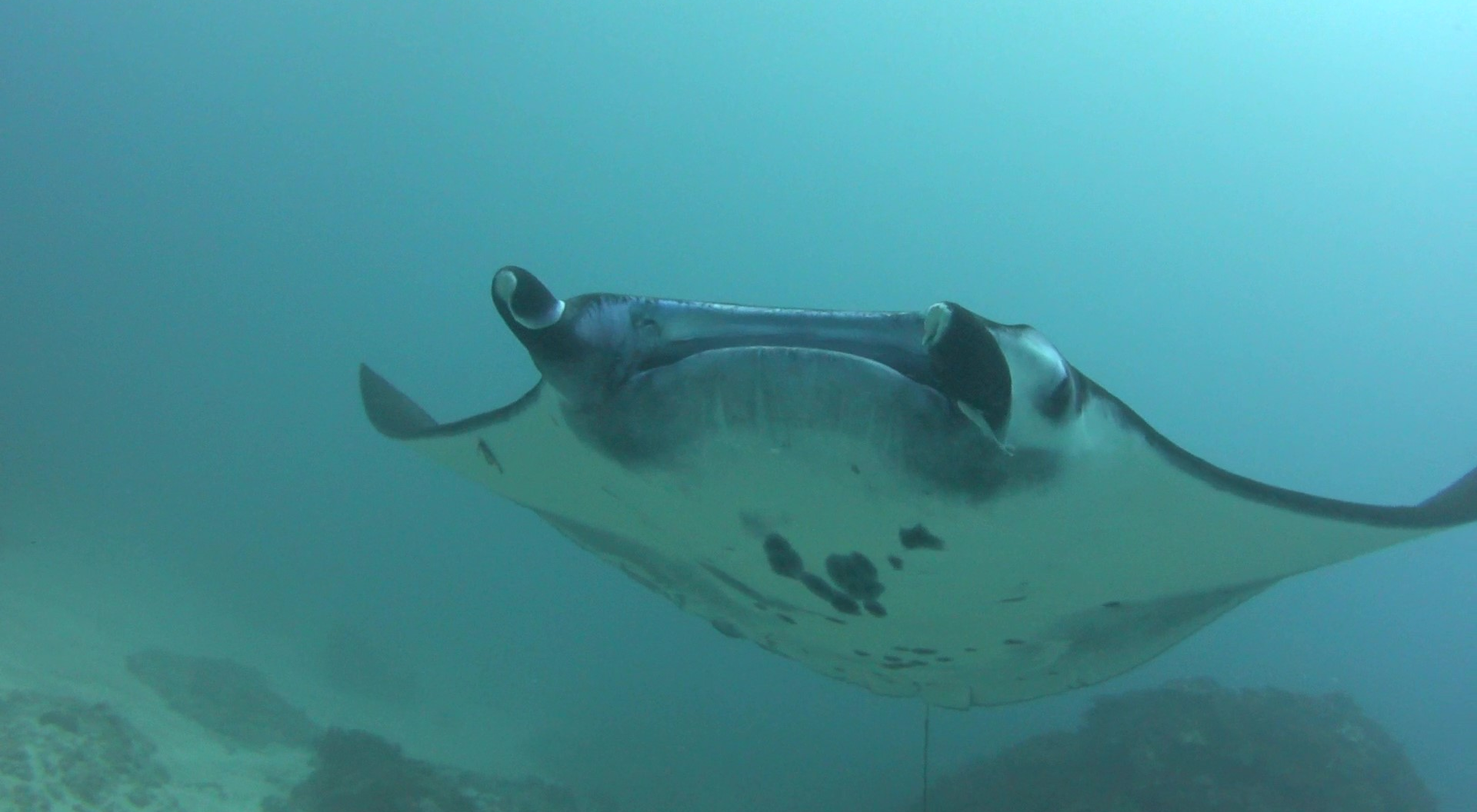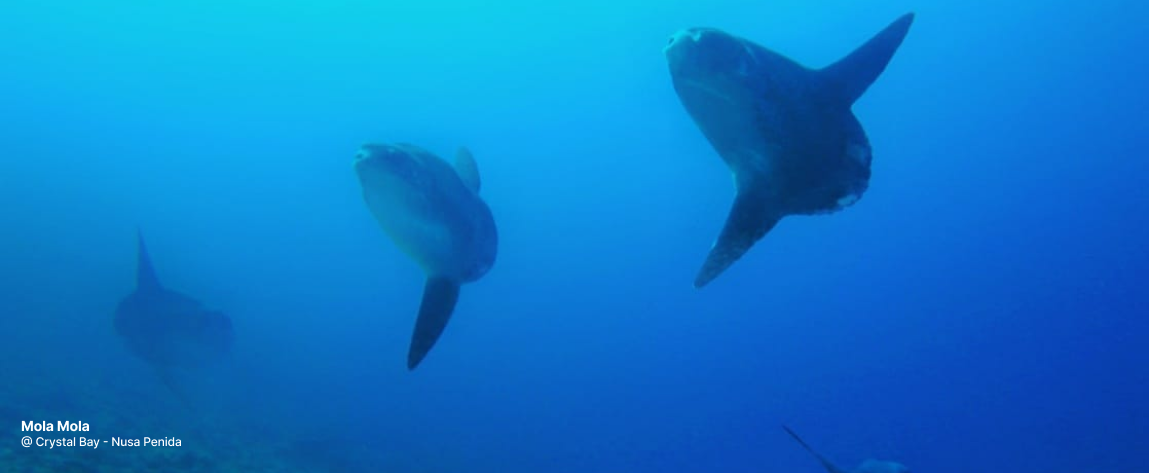5 major marine life to check out in Bali

Bali is world-renowned for its stunning beaches, lush jungles, and unique culture. But did you know that this Indonesian island is also home to some of the most incredible marine life in the world? Below you wil find the 5 marine creatures we highly recommend to check out during your trip in Bali:
1. MOLA MOLA
Let us start with the Mola Mola, also called the sunfish. This enigmatic species is the world’s heaviest bony fish, attaining weights of up to 5100 pounds (2300 kg) and measuring up to 14 feet (4+ m) from the top of the dorsal to the bottom of the anal fin. They can be found in most tropical and temperate oceans at random, and their only predators are orcas and huge sharks but fear not, the seas near Bali are too warm to draw large sharks. The term “ocean sunfish” refers to a very huge, oddly shaped fish that likes to float on its side at the water’s surface to warm itself in the sun (Also the reason that they get run over by boats sometimes which is sad, but true). Around Bali, we observe mola mola all year round. The Mola Mola spends a large portion of its life below 200 meters in depth, so we can only see them when they surface, especially between July and the end of November.

2. MANTA RAYS
Next, we’ll come to our enormous sea angels - our Manta Rays. Manta rays are known for being peaceful, curious, and kind creatures. The word ‘manta’ means ‘blanket’ in Spanish, and the link is obvious. They glide smoothly through the water, and it’s fascinating to witness how animals choose to engage with humans. They adore the scuba divers’ bubbles. and utilize it as their own private spa. They frequently glide over you to tickle themselves with the air bubbles coming out of your bcd if you are patient and composed. You’ll never forget your experience with a Manta Ray.
3. SEA TURTLES
Sea turtles are one of the most popular animals in the ocean, and they can be found in the waters around Bali. These slow-moving creatures are a favorite of tourists, and they are often seen sunbathing on the beaches. The Green turtle (Chelonia mydas), the Hawksbill turtle (Eretmochelys imbricate), the Olive Ridley turtle (Lepidochelys olivacea), the Leatherback sea turtle (Dermochelys coriacea), the Flatback sea turtle (Natator depressus), and the Loggerhead sea turtle (Caretta caretta) are six of the seven sea turtles that reside in Indonesia. Because of its rich and plentiful marine life variety, the Coral Triangle region is regarded by the World Wide Fund for Nature as a high priority for marine conservation. Fun fact: Turtles may live about 200 years! That is a lot of birthdays… heh!
4. REEF SHARKS
A reef shark spotting is another unforgettable experience. It is not at all rare—especially now—but it is always a remarkable event to see a shark. Reef sharks are beautiful creatures that reach about 1.5 meters long. Additionally, reef sharks are entirely harmless to people and often inquisitive about divers and snorkelers so you can come into contact with them. Reef sharks can be seen all around Bali, also with the many different types of them.
5. NEMO (CLOWNFISH)
Most people are familiar with Nemo, the small clownfish from the Pixar film Finding Nemo. In Bali, it is possible to see Nemo and his buddies living in anemones on the coral reefs.
-
Mandarin fish. Other popular names for mandarin fish (Pterosynchiropus splendidus) are mandarin dragonet, mandarin goby, green mandarin fish, striped mandarin fish, and psychedelic fish. These little beauties are a petite species, barely growing to a length of 3 inches. One of its most well-known predators is the scorpionfish.
-
Whale sharks. It is a really remarkable occasion when a whale shark is discovered in Bali because they are rarely seen there. There are claims of sightings near the USAT Liberty wreck, in a shallow area called Coral Garden.
And last, Bali is home to a wide variety of fish. much too many to list! So come dive in Bali to see these amazing sea creatures up close. We’ll take you to some of Bali’s most gorgeous dive locations to interact with the awe-inspiring sea creatures. Visit us now in www.traveltruster.com
Protect Bali’s marine life
Unfortunately, there are also different threats for these marine lives. Pollution in the water, especially plastic waste, washes into the sea during the rainy season and is usually brought to the same places as the plankton by the currents. Unfortunately, over time plastic deteriorates in the sun and breaks down into tiny pieces called micro plastic, which is small enough to be eaten by plankton. This is already happening. Plastic is unhealthy and not natural, I would not want to eat plastic with my sandwich. Indonesia, which is the second-largest producer of plastic waste worldwide, is particularly affected by this issue. But each and every one of us can make a small difference. Remember to bring a reusable bag with you when you go shopping, consider purchasing a reusable water bottle in place of a plastic one, and ask yourself if you really need a straw for your beverage. Unrestricted tourism represents another danger. Unfortunately, some visitors who undertake diving or snorkeling are not properly briefed. As a result, humans try to interact with these aquatic animals, pursue them, or interact with coral. Every animal submerged in water has a coating of mucus that guards against infection. As a result, every time a diver or snorkeler touches a fish or a piece of coral, they remove some of this mucus coating, which makes the animal more vulnerable to infection. If you look closely, you may see some of the coral damage in dive locations with a high diver density. In order to avoid accidentally touching any aquatic creatures, please maintain proper buoyancy. The uncontrolled fisheries are the main danger to these marine life.